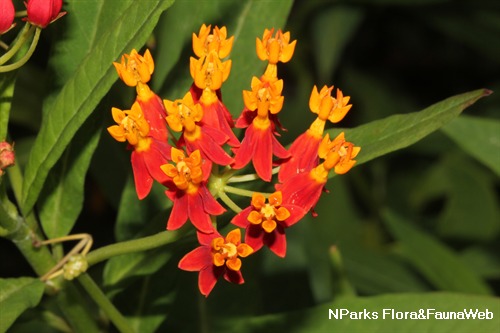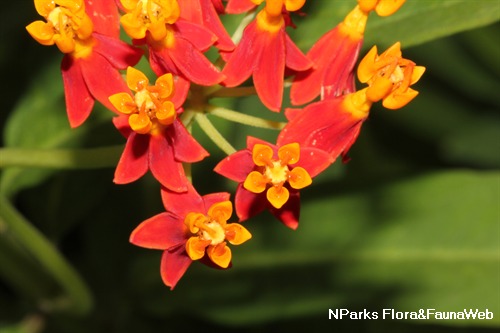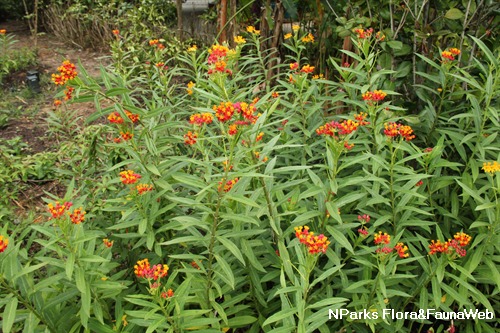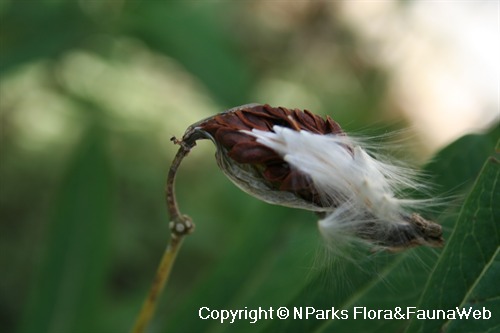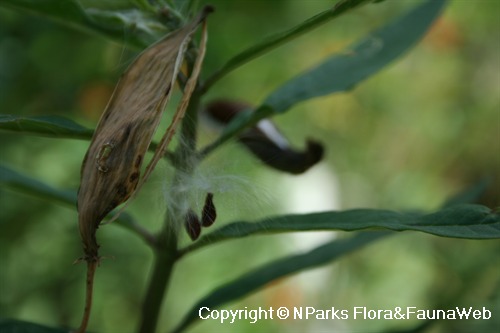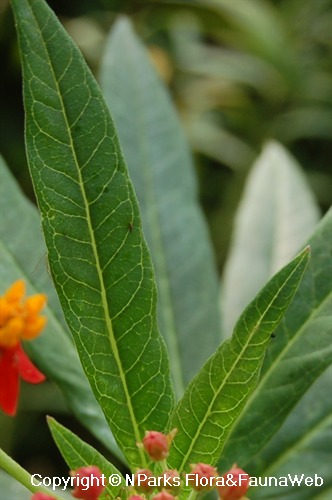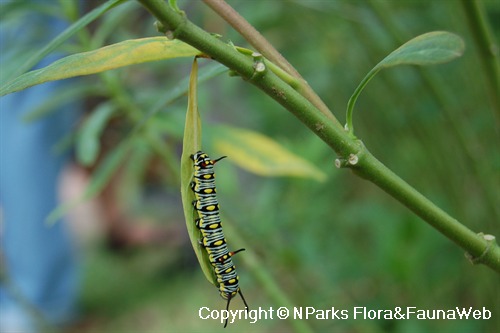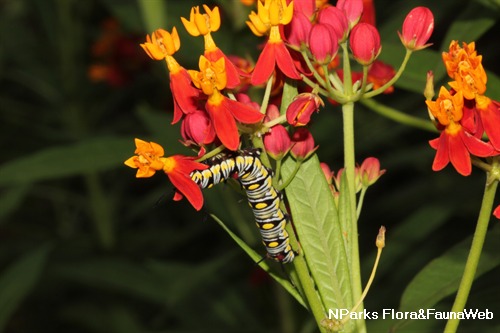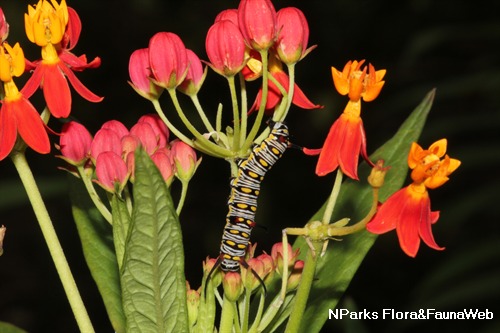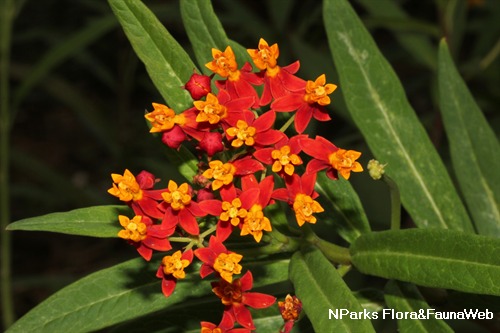
Back
Asclepias curassavica Linn.
| Family Name: | Apocynaceae |
| Synonyms: | Asclepias bicolor, Asclepias margaritacea, Asclepias aurantiaca,, Asclepias curassavica var. concolor, Asclepias cubensis, Asclepias nivea var. curassavica |
| Common Name: | Blood Flower, Cancerillo, Sunset Flower, Pleurisy Root, Cotton Bush, Red-head, Indian Root, Swallow Wort, Scarlet Milkweed, Matal, Bastard Pecacuanha, Milkweed, Silkweed, Mexican Butterfly Weed, 马利筋, 连生桂子花 |
Name
Classifications and Characteristics
| Plant Division | Angiosperms (Flowering Seed Plants) (Dicotyledon) |
|---|---|
| Plant Growth Form | Herbaceous Plant |
| Mode of Nutrition | Autotrophic |
| Maximum Height | 1.2 m |
| Maximum Plant Spread / Crown Width | 0.6 m |
Biogeography
| Native Distribution | South America |
|---|---|
| Native Habitat | Terrestrial |
| Preferred Climate Zone | Tropical |
| Local Conservation Status | Non-native (Spontaneous (Casual)) |
Description and Ethnobotany
| Growth Form | An erect herbaceous perennial, up to 1.2 m in height. |
|---|---|
| Foliage | Leaves simple, shortly petioled, opposite, acuminate, lanceolate to oblong-lanceolate, 7 to 15 cm long and 6 to 25 mm wide, with narrowed base. Leaves are green, occasionally with white midribs. |
| Stems | Stems smooth, round, dull green or permeated with dull red, and contains white milky poisonous sap. |
| Flowers | Inflorescence a cluster of 6 to 15 flowers on axillary stalks; flowers perfect, radially symmetrical or irregularly shaped, bright orange or red with yellow centers; sepals 5, deeply divided, reflexed, green; petals 5, linear, base amalgamated into a fused corolla. |
| Fruit | Fruits dry, spindle-shaped pods called follicles, green, 5 to 15 cm long, multi-seeded, splitting lengthwise on one side at maturity. Seeds flat, ovate, brown, winged, 4 to 6 mm long, 2.2 to 4mm wide, finely ridged, silky tailed. |
| Associated Fauna | Butterfly host plant for the Plain Tiger (Danaus chrysippus) |
| Cultivation | Propagate by seeds to give a robust plant. It can also be propagated by stem cuttings. Prefers moist, fertile and well-drained soil. Fertilise once a week with a balanced fertilizer in half strength for optimal growth. Caution: Parts of the plant are poisonous to human and animals if ingested. The milky sap is a skin irritant. Handle with caution, and use hand gloves if need be. |
| Etymology | The genus “Asclepias” is named after the Greek God of Medicine, Asclepios, due to the long regarded medicinal qualities of the plants in this genus. However, many species in the family are poisonous and may cause death in livestock or humans if ingested. The species name “curassavica” is derived from Curacao (an island in the southern Caribbean Sea, off the Venezuelan coast), where the first specimens of this plant were collected. |
| Ethnobotanical Uses | Medicinal: The roots are known as pleurisy root and used as an expectorant for pleurisy, pneumonia, and other lung problems. Extract of the roots has emetic and laxative effect. A poultice of the root is employed to treat ringworm and to stop bleeding. The milky sap of the stems is used to treat warts and skin parasites. A decoction of the plant is used an abortifacient (a substance to induce abortion). |
Landscaping Features
| Desirable Plant Features | Ornamental Flowers |
|---|---|
| Landscape Uses | Container Planting, Flowerbed / Border, Parks & Gardens, Small Gardens |
| Thematic Landscaping | Butterfly Garden, Naturalistic Garden |
Fauna, Pollination and Dispersal
| Fauna Pollination Dispersal Associated Fauna | Butterfly Host Plant |
|---|
Plant Care and Propagation
| Light Preference | Full Sun |
|---|---|
| Water Preference | Moderate Water |
| Rootzone Tolerance | Well-Drained Soils |
| Pest(s) | Sucking Insects |
| Propagation Method | Seed |
Foliar
| Mature Foliage Colour(s) | Green |
|---|---|
| Leaf Area Index (LAI) for Green Plot Ratio | 4.5 (Shrub & Groundcover - Dicot) |
Floral (Angiosperm)
| Flower Colour(s) | Red, Orange |
|---|
Image Repository
Others
| Master ID | 397 |
|---|---|
| Species ID | 1693 |
| Flora Disclaimer | The information in this website has been compiled from reliable sources, such as reference works on medicinal plants. It is not a substitute for medical advice or treatment and NParks does not purport to provide any medical advice. Readers should always consult his/her physician before using or consuming a plant for medicinal purposes. |

